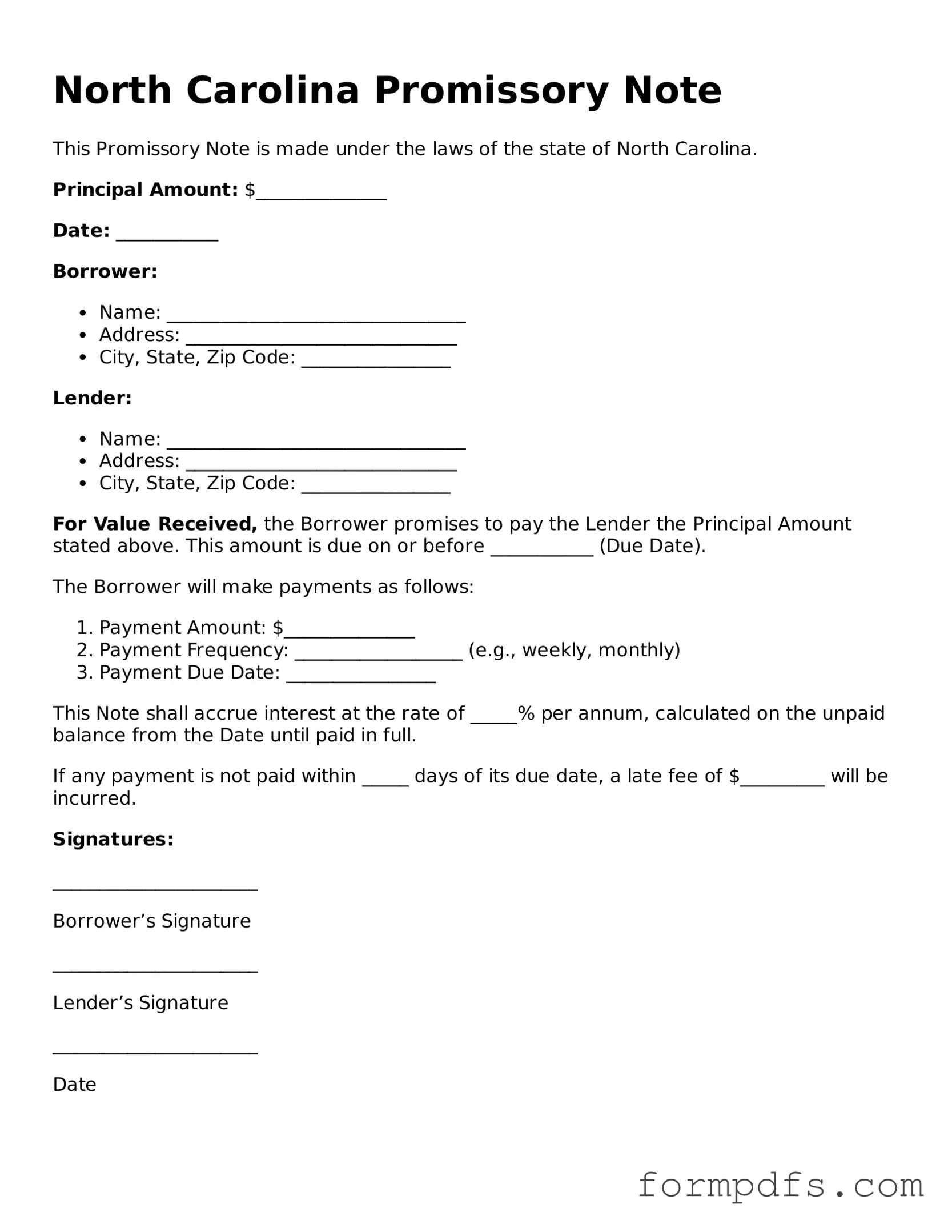What is a North Carolina Promissory Note?
A North Carolina Promissory Note is a legal document that outlines a borrower's promise to repay a specific amount of money to a lender. It includes details such as the loan amount, interest rate, repayment schedule, and any penalties for late payment. This document serves as a binding agreement between the two parties involved in the transaction.
Who can use a Promissory Note in North Carolina?
Any individual or business can use a Promissory Note in North Carolina. This includes personal loans between friends or family, as well as more formal agreements between businesses and clients. It’s important that both parties understand the terms outlined in the note to ensure clarity and prevent disputes.
What information is required in a North Carolina Promissory Note?
A Promissory Note in North Carolina should include the names and addresses of both the borrower and the lender, the principal amount being borrowed, the interest rate, the repayment schedule, and any late fees or penalties. It may also include provisions for default and any collateral if applicable.
Is a Promissory Note legally binding?
Yes, a Promissory Note is legally binding in North Carolina as long as it meets certain requirements. It must be signed by both parties, and the terms must be clear and specific. If either party fails to adhere to the terms, the other party may have legal grounds to enforce the agreement.
Do I need a lawyer to create a Promissory Note?
While it’s not legally required to have a lawyer draft a Promissory Note, consulting with one can be beneficial. A lawyer can help ensure that the document is properly structured, complies with state laws, and adequately protects your interests. If the loan amount is significant or the terms are complex, legal advice is highly recommended.
Can I modify a Promissory Note after it has been signed?
Yes, a Promissory Note can be modified after it has been signed, but both parties must agree to the changes. It’s best to document any modifications in writing, and both parties should sign the revised note to avoid any confusion or disputes in the future.
What happens if the borrower defaults on the Promissory Note?
If the borrower defaults, the lender has several options. They may pursue legal action to recover the owed amount, which could involve filing a lawsuit. The Promissory Note may outline specific remedies in case of default, such as late fees or acceleration of the loan, which means the entire balance becomes due immediately.
How can I enforce a Promissory Note in North Carolina?
To enforce a Promissory Note, the lender may need to file a lawsuit in the appropriate court if the borrower fails to repay. The lender should have a copy of the signed note and any relevant documentation, such as payment records, to support their case. It’s advisable to consult with a legal professional to navigate the enforcement process effectively.
